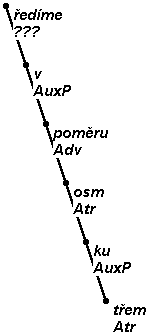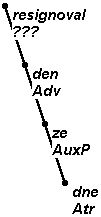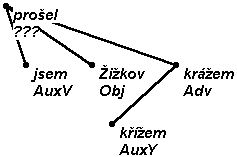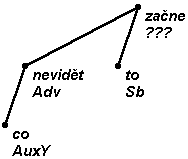The representation of any construction is guided first of all by its syntactic structure and syntactic relations. It is true that with collocations these relations are often suppressed, but in spite of this, we always try to capture at least some meaningful structure, even though such a structure need not be fully justified by general rules. The following sentences illustrate the point:
There exist, however, collocations the syntactic structure of which is so doubtful and unclear that it is impossible to propose a reasonable syntactic representation. In such cases we take recourse to a technical representation. This is really the last resort, used only in cases when all other attempts at a meaningful representation fail.
In such cases, the last (i.e. the right-hand side) element is chosen as the governor, suspending it in the position in which the collocation as a whole should be suspended, assigning to it afun according to that position (i.e. that corresponds to the function of the whole collocation). The rest of nodes are suspended on this selected node and are assigned afun AuxY.




